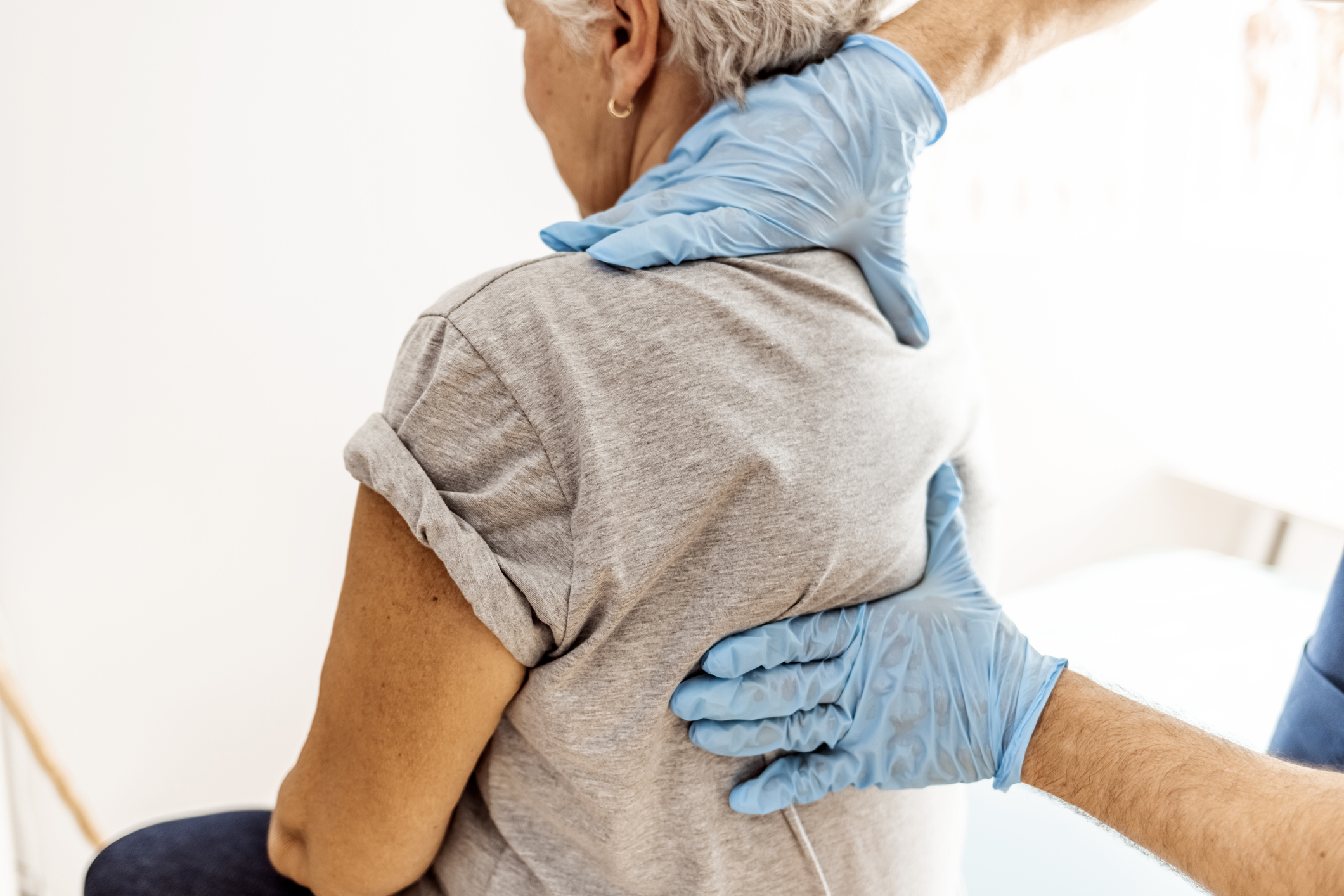Adult degenerative scoliosis is caused by changes to the spine as a person ages. This abnormal sideways curvature of the spine can result from pressure on the facet joints and injury or degeneration of the spinal discs. The spinal curvature may resemble a C shape or an S shape when viewed from behind. Adult degenerative scoliosis is typically diagnosed in people aged 65 or older, although changes to the spine may have been progressing for some period of time.
Causes of Adult Degenerative Scoliosis
Several factors contribute to adult degenerative scoliosis. Years of wear and tear on the spine leads to degeneration of its structures. Osteoarthritis can develop in the facet joints. Many post-menopausal women develop osteoporosis, a condition in which their bones become thinner and more brittle. Compression fractures in the spine that are associated with osteoporosis can contribute to adult degenerative scoliosis. The vertebrae can also shift out of alignment when they can no longer provide support.
Symptoms of ADS

ADS can trigger painful symptoms in the mid to low back. This is usually due to nerve impingement or joint inflammation rather than the curvature itself. Early symptoms of ADS are often a dull ache or stiffness in the spine. There may be numbness, weakness, or pain in the buttocks or legs. Symptoms usually worsen as the curvature becomes more pronounced. Pain may become worse when standing or walking, and may be relieved when lying down.
Eventually, the spine curves to one side. The hips or shoulders may look uneven, and there may be a loss of height. Sometime, a hump may appear on the back.
Diagnosing ADS
During the physical examination, the physician looks for signs of asymmetry including shoulders and hips not being level, one side of the rib cage higher than the other, and the pelvis being tilted. Diagnostic tests include x-rays to help determine the degree of spinal curvature. An MRI can show the condition of the spinal discs.
Treatments
Non-operative
- Physical therapy can be helpful. Posture and range of motion may be improved with stretching and strengthening exercises.
- Medication may relieve pain and inflammation. This may enable patients to progress in their physical therapy program.
- Weight loss can reduce pressure on the facet joints.
- Hydrotherapy allows joints to be moved without excessive stress.
- Ice therapy reduces inflammation.
- Heat therapy increases circulation to the area and relaxes stiff muscles.
Surgery
Many older patients want to avoid surgery due to age and other medical conditions. However, decompression surgery may provide relief by taking pressure off pinched nerves.
Atlanta Brain and Spine Care
Atlanta Brain and Spine Care is metro Atlanta’s leading neurosurgery practice. Our physicians are experts in the diagnosis and treatment of adult degenerative scoliosis. Contact us to schedule a consultation with our specialists.


